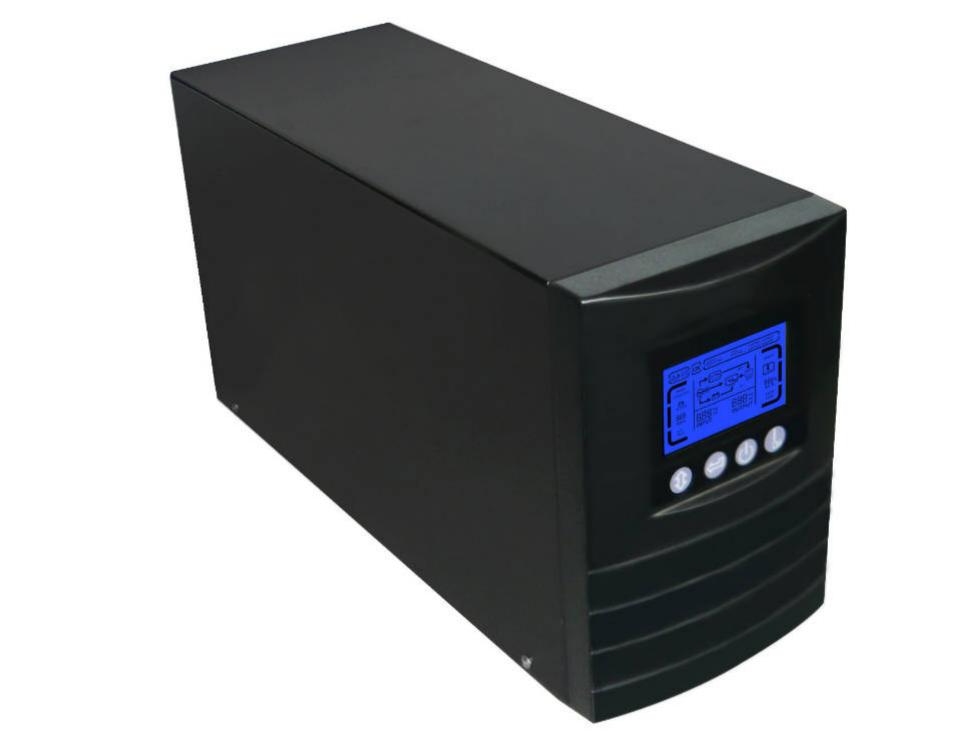
In today’s tech-heavy world, losing power even for a second can mess things up. Small offices, telecom gear, or data centers can’t afford disruptions. A 1kVA online UPS (Uninterruptible Power Supply) keeps sensitive devices safe from blackouts, voltage dips, and electrical noise. Here’s how a small 1kVA online UPS handles big problems in all sorts of places.
A 1kVA online UPS is great for small to medium devices that need steady, clean power. It uses double-conversion technology to switch to battery instantly when the power fails. Unlike offline or line-interactive models, it constantly turns AC into DC and back to AC. This gives a smooth sine wave output, no matter how bad the input power is.
The RM series 1KVA, 2KVA, 3KVA 220V rack-mount online UPS is made for servers, data centers, delicate electronics, telecom, banks, hospitals, traffic systems, public security, and ATMs.
It ensures your equipment stays on, even during tiny power hiccups.
The key parts of an 1kVA online UPS team up to deliver reliable power:
The rectifier turns AC from the grid into DC. This DC keeps the batteries charged and feeds the inverter.
The inverter changes DC from the rectifier or batteries back to steady AC. Your devices get clean, stable sine wave power every time.
True online double-conversion technology with smart microprocessor control shields your gear from power surges or drops.
Batteries store energy for when the power goes out. A 1kVA UPS usually has sealed, no-maintenance lead-acid or lithium-ion batteries, depending on the model.
Fast, steady charging brings back 90% capacity in 4 hours (standard model UPS). This keeps downtime short.
The bypass switch lets you do maintenance safely by sending grid power straight to devices. It also kicks in during overloads or faults.
Routers, switches, and telecom stations need constant power. A 1kVA online UPS keeps them running through grid issues or outages.
Cameras and alarms can’t go offline. A small, rack-mount UPS ensures they stay active during blackouts.
Medical tools like ECG machines or lab analyzers need precise power. Even tiny voltage changes can mess up results. The EX1K-EX3KVA series high-frequency online UPS is built for servers, data centers, sensitive gear, telecom, banks, and hospitals where accuracy counts.
POS systems, computers, and printers need to stay on. A 1kVA UPS gives just enough power to protect key office tasks without breaking the bank.
· No Delay: Switches to battery instantly during outages.
· Smooth Power: Perfect for sensitive electronics.
· Compact Size: Fits in tight rack setups.
· Smart Monitoring: Many models have SNMP, USB, or RS232 connections.
· Great Protection: Blocks overvoltage, overload, overcurrent, and overcharging.
|
Feature |
1kVA |
2kVA |
3kVA |
|
Power Output |
~800W |
~1600W |
~2400W |
|
Typical Use |
PCs, routers |
Small servers |
Workstations |
|
Battery Runtime (Full Load) |
~2–5 mins |
~2–5 mins |
~2–5 mins |
|
Form Factor |
Rack/Tower |
Rack/Tower |
Rack/Tower |
|
Input Voltage Range |
Wide (e.g., 110–300VAC) |
Wide |
Wide |
|
Communication Ports |
RS232/USB/SNMP |
RS232/USB/SNMP |
RS232/USB/SNMP |
Keep your total load under ~800W. Leave a 20% cushion for future needs or power spikes.
How long the battery lasts depends on its size. Choose internal batteries for small spaces or external ones for longer backup.
Hot-swappable batteries let you swap them out without turning off your gear.
Look for units with LCD screens and remote tools like SNMP cards or USB ports to check status in real time.
Multi-platform communications: RS232 (standard), USB/RS485/SNMP/dry contacts (optional).
Pick a tower or rack-mount unit based on your setup. Rack-mount models work well in server rooms or organized wiring spaces.
1 kVA High-frequency online UPS designs make less noise because of smaller transformers. Smart fans adjust speed to save energy and stay quiet.
Rear vents and variable-speed fans help cool things down in tight spots.
When picking a supplier:
· Go for ISO-certified companies.
· Make sure they offer help after you buy.
· Check the warranty terms.
· Look into their research and development skills.
ZLPOWER is a high-tech company focused on UPS research, production, and sales. We ship to Europe, the USA, Canada, and South Africa.
Our RM series high-frequency online UPS is designed for servers, telecom, and medical uses, making them a solid choice.

If you want reliable protection from shaky power without spending too much, ZLPOWER’s 1kVA online UPS is a smart pick. It has advanced DSP control, a 0.9 output power factor, a wide input voltage range (110–300VAC), clever battery management, and works with multiple communication platforms. It’s ready for today’s needs and tomorrow’s challenges.
A: An online UPS uses double-conversion to keep power steady with no delay during outages. Offline UPS systems have a slight delay when switching to battery. Line-interactive UPS systems fix voltage issues but don’t block power problems as well.
A: A 1kVA UPS works for small servers or low-power devices up to ~800W. For bigger servers, look at 2kVA or 3kVA models for more power.
A: Add up the wattage of all your devices. Keep it under 800W. Leave a 20% buffer for surges or future needs. Check device manuals or labels for power details.
A: Sealed lead-acid batteries last 3–5 years, depending on use, temperature, and care. Lithium-ion batteries might last longer but are rare in budget models.